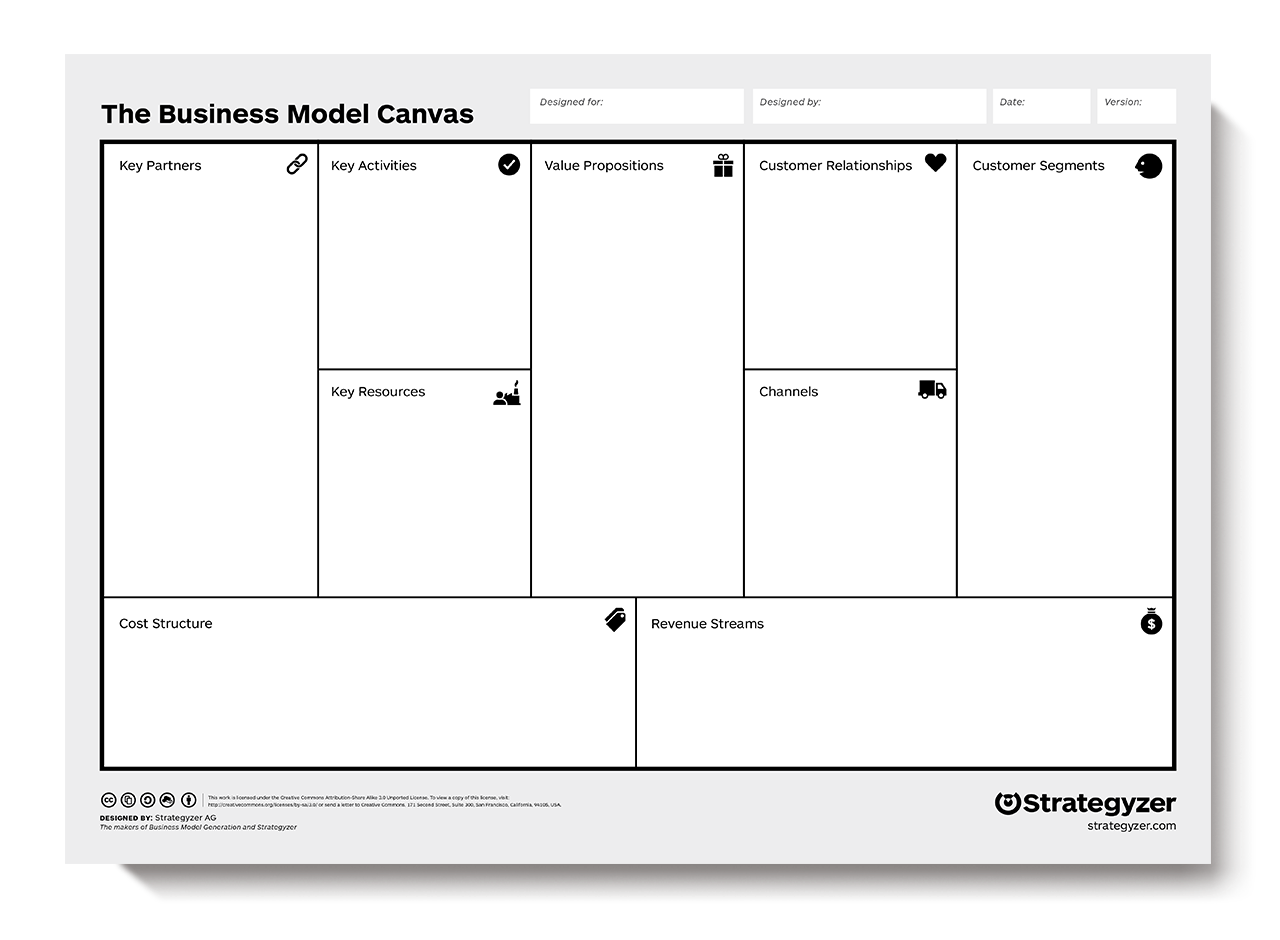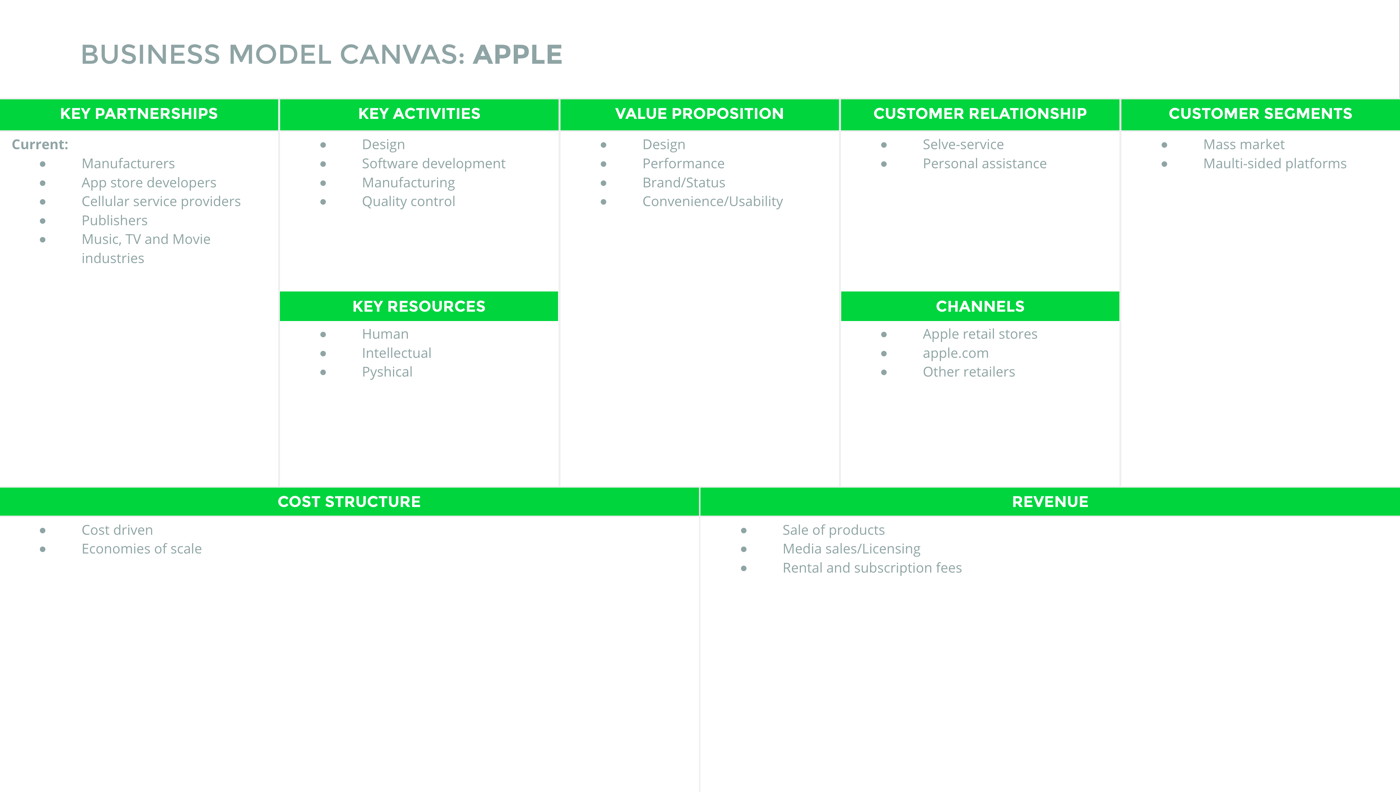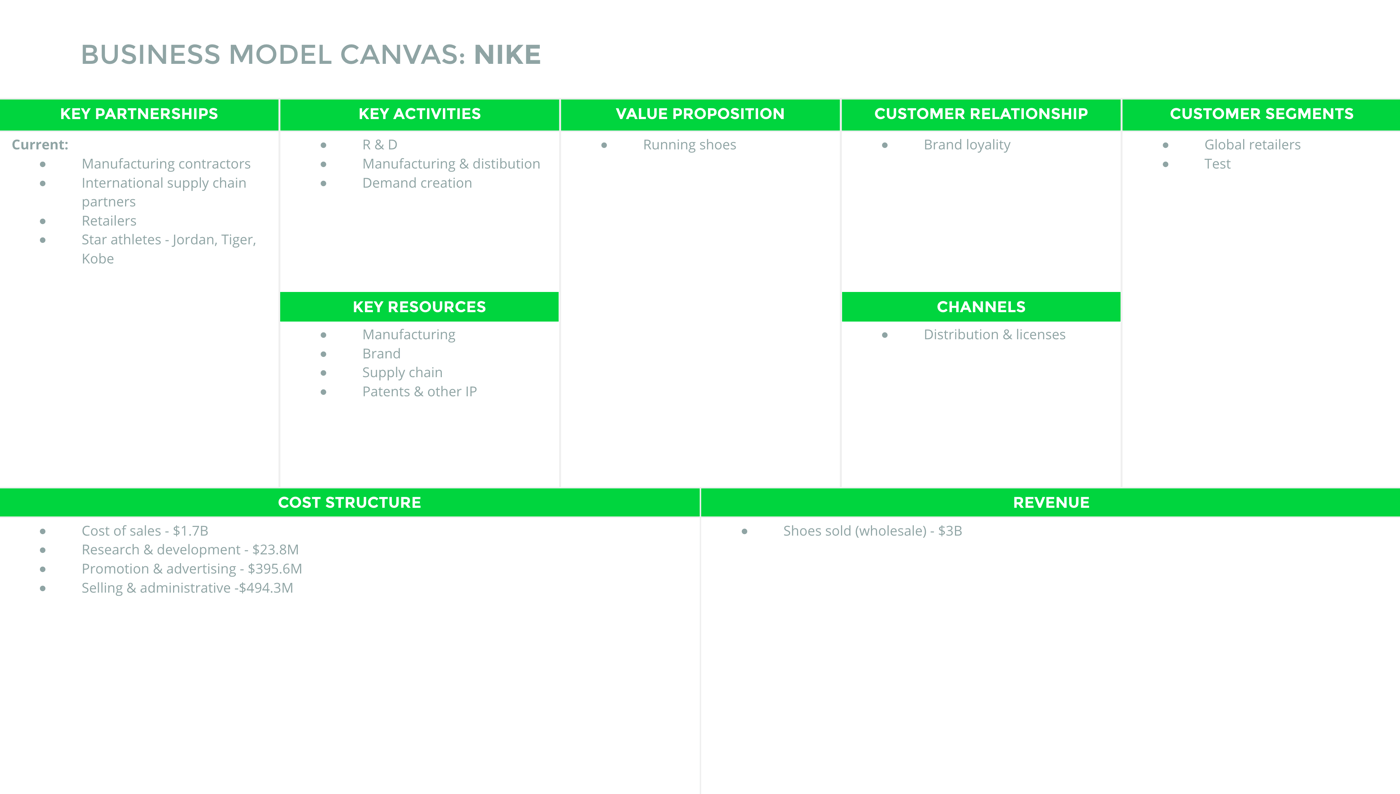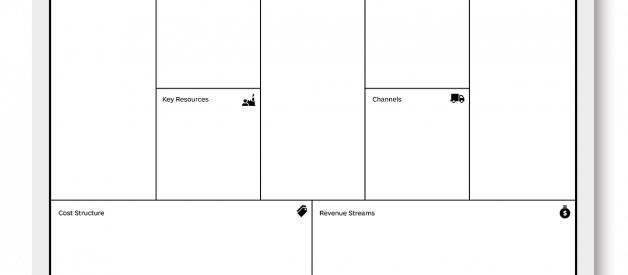 Sheda Director Mike Ebinum.
Sheda Director Mike Ebinum.
The Business Model Canvas (BMC) is a strategic management tool to quickly and easily define and communicate a business idea or concept.
It is a one page document which works through the fundamental elements of a business or product, structuring an idea in a coherent way.
 An example of a Business Model Canvas.
An example of a Business Model Canvas.
The right side of the BMC focuses on the customer (external), while, the left side of the canvas focuses on the business (internal).
Both external and internal factors meet around the value proposition, which is the exchange of value between your business and your customer/clients.
- To quickly draw a picture of what the idea entails.
- It allows us to get an understanding of your business and to go through the process of making connections between what your idea is and how to make it into a business.
- It looks at what kinds of customer decisions influence the use of your systems.
- It allows everyone to get a clear idea of what the business will likely be.
How to use it
Value Proposition:
The Value Proposition is foundational to any business/product.
It is the fundamental concept of the exchange of value between your business and your customer/clients.
Generally, value is exchanged from a customer for money when a problem is solved or a pain is relieved for them by your business.
Good questions to ask when defining your business/product:
- What is the problem I am solving?
- Why would someone want to have this problem solved?
- What is the underlying motivator for this problem?
Tips:
A good way to approach this for users/customers is by looking at your customer segments and figuring out where your product/service solves the problem for your customer, based on Maslow?s Hierarchy of Needs.
If you are selling your product or service to another business, you are a key partner in them achieving their Value Proposition for their customers.
It is important to have context around the goals the company is trying to achieve for their Customer Segments and where your business/product/service fits in the value chain.
Customer Segments
Customer Segmenting is the practice of dividing a customer base into groups of individuals that are similar in specific ways, such as age, gender, interests and spending habits.
Things to consider when determining your Customer Segments:
- Who are we solving the problem for?
- Who are the people that will value my value proposition?
- Are they another business?
- If so, what are the characteristics of those businesses?
- Or, are they other people?
- Does my value proposition appeal to men/women or both?
- Does it appeal to young adults aged 20 to 30 or teenagers?
- What are the characteristics of the people who are looking for my value proposition?
Another thing to gauge and understand is your market size, and how many people there are in the Customer Segment. This will help you understand your market from a micro and macro perspective.
A great place to start understanding your customer is to create customer personas for each of your Customer Segments.
You can read the guide to Persona Development here.
 A good place to start understanding your customer is by creating customer personas for each of your customer segments.
A good place to start understanding your customer is by creating customer personas for each of your customer segments.
Customer Relationships
Okay, so we know our Value Proposition and have developed Personas to better understand our Customer Segments or ?customers?, but what is the relationship we have with our customers?
Customer Relationships is defined as how a business interacts with its customers.
So, do you meet with them in person? Or over the phone? Or is your business predominantly run online so the relationship will be online too?
Some examples are:
- In person (one-to-one)
- Third party contractors
- Online
- Events (one-to-many)
- Phone
A really helpful step is to create a User Journey Map of your customers as they interact with your business.
This helps clarify the points of engagement between you and your customer and the modes used to relate to your customers.
This will also help you start to define your operations as a business and also help you identify opportunities for automation.
Channels
Channels are defined as the avenues through which your customer comes into contact with your business and becomes part of your sales cycle.
This is generally covered under the marketing plan for your business.
Good questions to ask when identifying the channels to reach your customers are:
- How are we going to tell our customer segment about our value proposition?
- Where are our customers?
- Are they on social media?
- Are they driving their car and listening to the radio?
- Are they at an event or conference?
- Do they watch TV at 7pm on a Friday night?
Examples of channels:
- Social media
- Public speaking
- Electronic mail (email marketing)
- Networking
- SEM (Search Engine Marketing)
- SEO (Search Engine Optimisation)
- Engineering as marketing
- Viral marketing
- Targeting blogs
- Sales and promotions for commissions
- Affiliates
- Existing platforms
- PR
- Unconventional PR
- Social advertising
- Trade shows
- Content marketing
- Community building
- Offline advertising (billboards, TV, radio)
Understanding how to reach your customers is so crucial to your business.
We recommend you listen to Traction (Audiobook) by Gabriel Weinberg & Justin Mares.
 Social media is just one of many channels where your customer comes into contact with your business.
Social media is just one of many channels where your customer comes into contact with your business.
Key Activities
The Key Activities of your business/product are the actions that your business undertakes to achieve the value proposition for your customers.
Questions to ask:
- What activities does the business undertake in achieving the value proposition for the customer?
- What is the resource used?
- Time?
- Expertise?
- Distribution of product?
- Technical development?
- Strategy?
- Offer resources (human/physical)?
- What actions does it take you and/or your staff to achieve value exchange?
Examples:
- Consulting
- Designing
- Web development
- Baking
- Driving
- Shovelling
Key Resources
Next you should think about what practical resources are needed to achieve the key activities (actions) of the business?
Key means the resources your business requires to do business.
These resources are what is needed practically to undertake the action/activities of your business:
- Office space
- Computers
- Hosting
- People (staff)
- Internet connection
- Car
- Bike
- Oven
- Electricity
- Car Parts
 Key resources could include office space, computers and staff.
Key resources could include office space, computers and staff.
Key Partners
Key Partners are a list of other external companies/suppliers/parties you may need to achieve your key activities and deliver value to the customer.
This moves into the realm of ?if my business cannot achieve the value proposition alone, who else do I need to rely on to do it??.
An example of this is ?if I sell groceries to customers, I may need a local baker to supply fresh bread to my store?.
They are a key partner to achieve the value my business promises to the customer.
Cost Structures
Your business cost structure is defined as the monetary cost of operating as a business.
- How much does it cost to achieve my businesses key activities?
- What are the cost of my key resources and key partnerships?
- How much does it cost to achieve the value proposition for my customers/users?
- Are there additional costs to running a business?
- Legal?
- Insurance?
- What is the cost of my business?
- It is important also to place a monetary value on your time as a cost.
- How much would it cost you to hire you?
- What is the opportunity cost of running your business?
Revenue Streams
Revenue Streams are defined as the way by which your business converts your Value Proposition or solution to the customer?s problem into financial gain.
It is also important to understand pricing your business accordingly to pain of purchase in exchange for the pain of solving the problem for your customer.
But how do you gain revenue?
There are many different revenue models here:
- Pay per product (pay per view)
- Fee for service
- Fixed rate
- Subscription
- Dividends
- Referral feeds
- Freemium
- Equity gain
Tools to Use
https://canvanizer.com/
Whiteboard
Butchers Paper
Google Slides
Case Studies
APPLE COMPUTERS

NIKE

Related Resources
Three Questions You Should Ask Before Making An App
How To: Idea Validation | Introduction to Prototyping
SEED?s Road to MVP Guide
Want some help on building your startup, growing your business and creating products/services that your customers will love? Contact SHEDA to make an inquiry.
This blog originally appeared on the SHEDA website.

